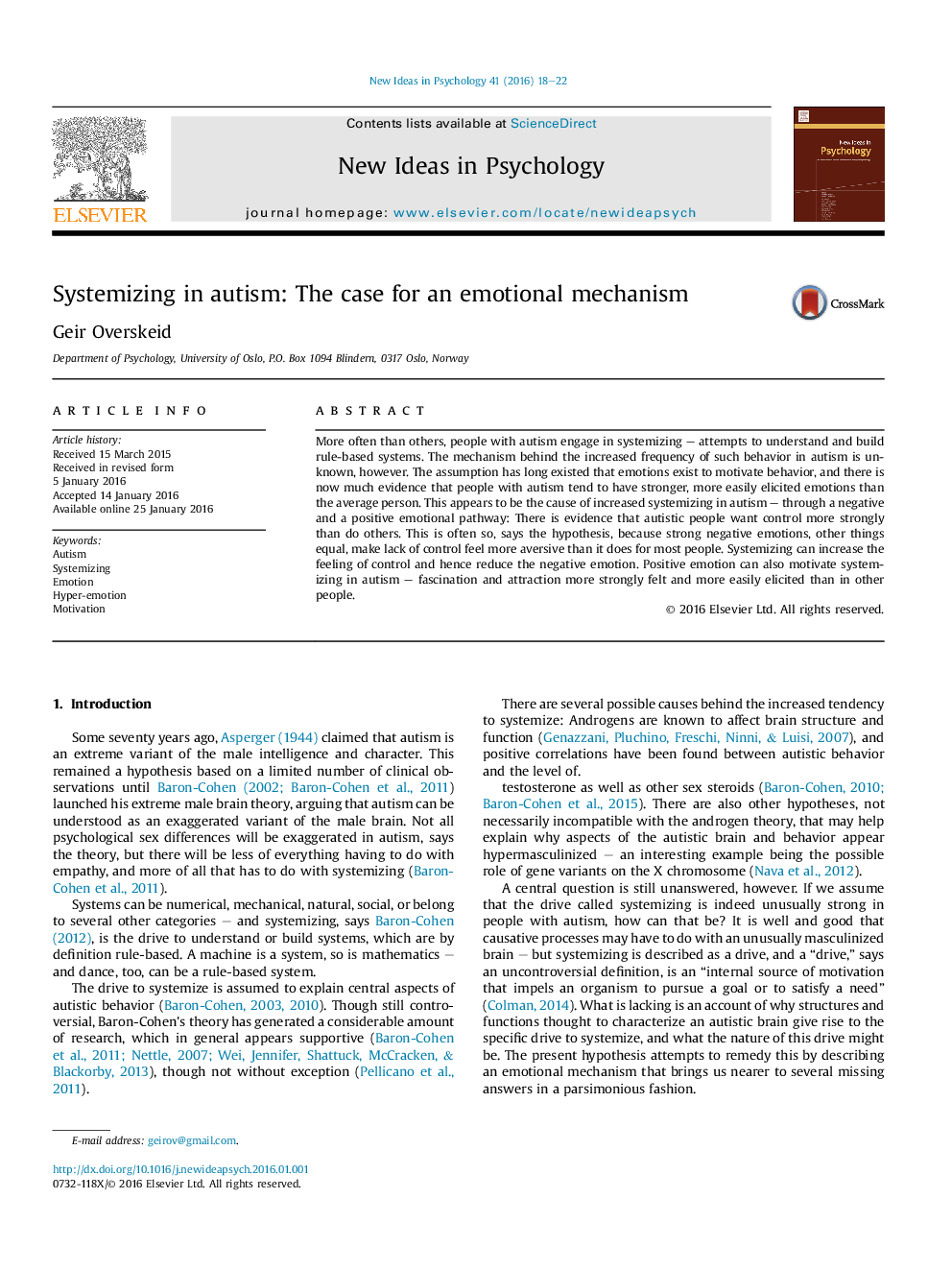| کد مقاله | کد نشریه | سال انتشار | مقاله انگلیسی | نسخه تمام متن |
|---|---|---|---|---|
| 331619 | 544635 | 2016 | 5 صفحه PDF | دانلود رایگان |
• Increased systemizing — attempts to build and understand rule-based systems — appears to be a hallmark of autism.
• Unusually intense emotions, positive and negative, are behind the increased systemizing, says the present hypothesis.
• A parsimonious mechanism is described, leading from hyper-emotionality to increased systemizing.
• Several predictions arise from the hypothesis, some already supported by the extant literature.
More often than others, people with autism engage in systemizing – attempts to understand and build rule-based systems. The mechanism behind the increased frequency of such behavior in autism is unknown, however. The assumption has long existed that emotions exist to motivate behavior, and there is now much evidence that people with autism tend to have stronger, more easily elicited emotions than the average person. This appears to be the cause of increased systemizing in autism – through a negative and a positive emotional pathway: There is evidence that autistic people want control more strongly than do others. This is often so, says the hypothesis, because strong negative emotions, other things equal, make lack of control feel more aversive than it does for most people. Systemizing can increase the feeling of control and hence reduce the negative emotion. Positive emotion can also motivate systemizing in autism – fascination and attraction more strongly felt and more easily elicited than in other people.
Journal: New Ideas in Psychology - Volume 41, April 2016, Pages 18–22
